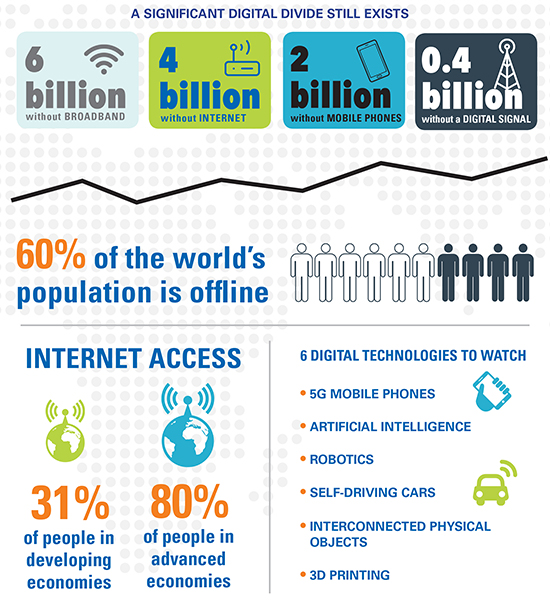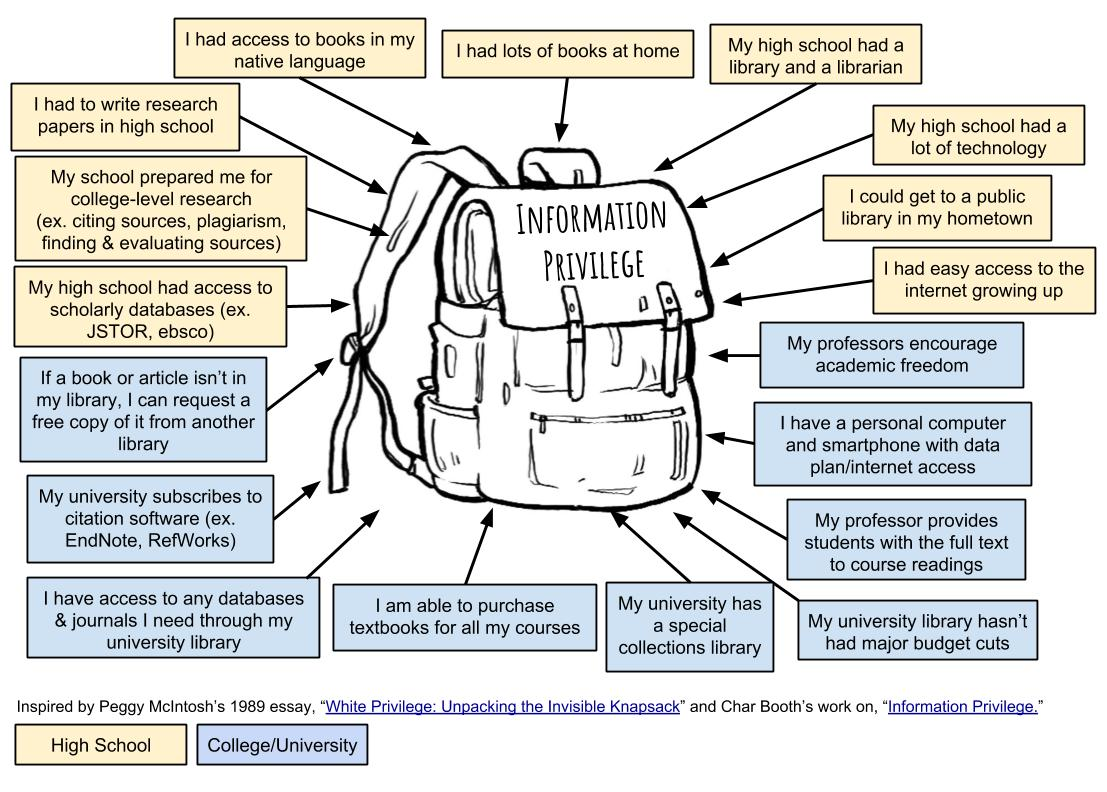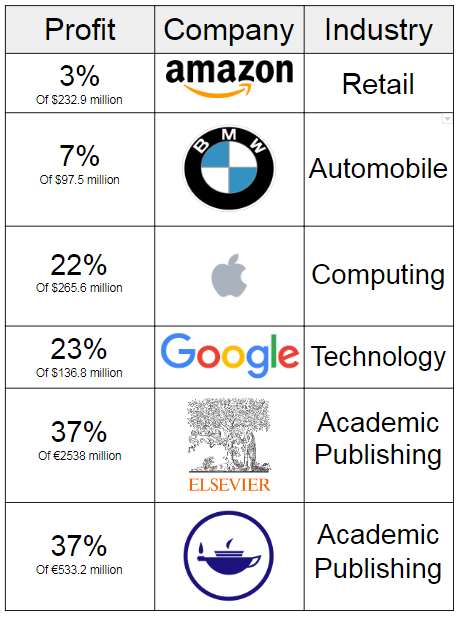10.1: Information Value and Privilege Details
- Page ID
- 100041
Why Are We Reading This?
This week's readings take up where last week's readings left off. We know from last week that not all voices are being heard in academia. This leads directly to the value and privilege of information. There is a value placed on academic information (both monetary and societal value). And in academia especially, only a privileged few have access to certain types of scholarly writings.
What is Information Privilege?
The idea that status impacts your access to information is nothing new. What is relatively new is that librarians and others are critically talking about it as it relates to higher education. There is an excellent 2018 academic paper on this topic that I will link to at the bottom, but honestly it's more information than you really need to be able to understand this concept.
Instead, I'm going to ask you to read the Wikipedia entry on Information Privilege, which is well-written and researched and actually includes information from the paper I referenced above.
Reading One: From Wikipedia: Information Privilege
Digital Divide
We are active users of technology - I am teaching and you are learning online. When we're submerged in this kind of environment, it's sometimes easy to forget that what's known as the digital divide still exists. Our access to technology gives us advantages in accessing information that many around the world do not have. This information graphic from the International Monetary Fund illustrates that:

Image prepared by Natalie Ramírez-Djumena. Text and charts are based on World Development Report 2016: Digital Dividend, published by The World Bank in January 2016.
Information Privilege in High School & College
Students, even those in high school, enjoy information privileges that aren't afforded to the general public. This graphic created by Duke University Library helps you understand this privilege more fully:

The Monetary Value of Academic Publishing
Academic publishing is big business. These companies are making billions of dollars. You've undoubtedly been directly impacted by this; you've likely faced decisions on whether to buy a $100+ textbook that is required for a course. When you learn more about how the system is working, it can make you very angry with the publishers. The good news is that academics, librarians, and even the government are pushing for more open access to academic material.
This first reading is designed to introduce you to the system in which academic journals and other original research content is published.
Reading one: From Footnote website: The Exploitative Economics of Academic Publishing by Samuel Gershman
Profits by Industry
This graphic is meant to illustrate the incredible profits experienced by academic publishers. You can see that scholarly publishing is far more profitable than being one of the biggest retailers in the world (Amazon).

Figures came from company websites. For more information, read an explanation of how these profits were calculated and from what sources the information came.
University of California Cuts Ties with Elsevier
I mentioned that academics have been pushing for more open access. This fight came to a head recently with the University of California system and one of the largest academic publishers, Elsivier. This article outlines UC's unprecedented decision
Your Academic Privilege
After reading all of this information, I thought you might be interested in how much the Los Rios Community College District pays for students to have access to the library's research databases and other library resources.
For database content alone, including access to things such as Academic Search Premiere, The EBSCO Ebook Collection, Films on Demand, and other specialized databases, the district pays about $285,000/year. On top of this, each college is afforded a local budget to purchase additional books and resources that are housed locally at the campus. Cosumnes River College has received about $75,000/year to acquire these additional resources, though our budget was cut this year because of the COVID-19 crisis and the financial impact it has had across the state.
This is why librarians and your instructors are constantly asking you to take advantage of your academic privilege by using the library databases.
My hope is that someday more academic information will be freely available. Until then - we should all be part of this fight.
Further Reading
Hare, S. & Evanson, C. (2018). Information privilege outreach for undergraduate students. College & Research Libraries, 79(6), 726-736. https://doi.org/10.5860/crl.79.6.726
This chapter was compiled, reworked, and/or written by Andi Adkins Pogue and is licensed under a Creative Commons Attribution-NonCommercial-ShareAlike 4.0 International License, except where otherwise noted.
Original sources used to create content (also licensed under CC BY-NC 4.0 unless otherwise noted):
Profits by Industry table [Image file]. (Updated to 2018), but inspired by Duke University Libraries, “Profit Margin Table" and Alex Holcombe’s profit margin tables, https://alexholcombe.wordpress.com/2015/05/21/scholarly-publisher-profit-update/
References
Ramerez-Djumena, N. (September 2016). A significant digital divide still exists [Image file]. https://www.imf.org/external/pubs/ft/fandd/2016/09/picture.htm
Rozear, A. (n.d.) Invisible knapsack: Information privilege [Image file]. Duke University Libraries https://sites.duke.edu/library101_instructors/2018/08/13/information-privilege/

